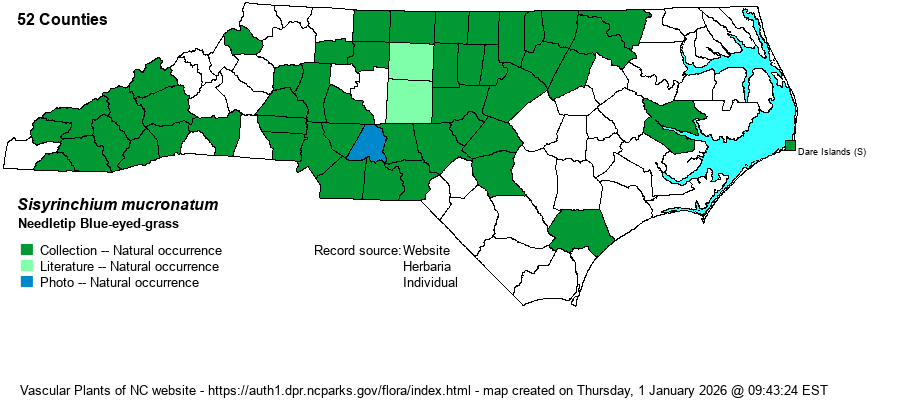| Author | Michaux | |
| Distribution | Nearly statewide, but essentially absent in the Coastal Plain, though a few scattered records there (e.g., Cape Hatteras area of Dare County and Pender County). A number of Piedmont and Mountain specimen records have been deleted, as they were misidentified; nonetheless, it probably occurs in most Mountain and Piedmont counties.
This species has an Eastern range. Though present in south-central Canada and the Great Lakes region, it is mainly absent from areas west of the Appalachians. Ranges south to southern GA, but primarily from PA to SC and TN. | |
| Abundance | Frequent to common over most of the Mountains and Piedmont; less common (infrequent) in the western and the central Coastal Plain. This is clearly a species that should have a State Rank of S5; the NCNHP's rank of S3S4 is certainly an under-estimate of its numbers. | |
| Habitat | This is a species of mesic soil conditions of fields, open woods, roadbanks, and forest edges, being more numerous over circumneutral soil but not a requisite. It can occur in damp meadows or damp areas in powerline clearings, but the majority of the plants occur in upland habitats. Thus, it is a generalist in habitat choices. | |
| Phenology | Blooms from April into June, and fruits in June and July. | |
| Identification | This is a rather typical blue-eyed-grass, it being the most widespread one in the state that has a narrow scape instead of broadly winged (as in S. angustifolium). The scape is flattened (has wings) but is very slender, barely 2 mm wide. Likewise, the basal leaves are equally narrow (about 2 mm wide) and grow to about 6 inches tall, noticeably shorter than the flowering stem that grows to 9-12 inches high. The stem is generally unbranched, such that the spathe (bracts) is solitary. Most importantly, the spathe bracts are tinged red or maroon (vs. plain green in S. angustifolium and S. atlanticum). The very few flowers are bright blue and about 1/2-inch across. Thus, if you are working in a field, woodland edge, or opening, and you spot a blue-eyed-grass with a narrow (but very slightly winged) stem and equally narrow leaves, no branches in the inflorescence, and essentially a single flower, you likely have this widespread species. | |
| Taxonomic Comments | This has always been a good species, but note that S. atlanticum was considered a variety of this species during the last century (as in RAB 1968), a treatment that virtually no one else followed. Thus, it was named as S. mucronatum var. mucronatum.
| |
| Other Common Name(s) | Needle-pointed Blue-eyed-grass, Michaux's Blue-eyed-grass, Slender Blue-eyed-grass | |
| State Rank | S3S4 [S5] | |
| Global Rank | G5 | |
| State Status | | |
| US Status | | |
| USACE-agcp | FACW link |
| USACE-emp | FAC link |

